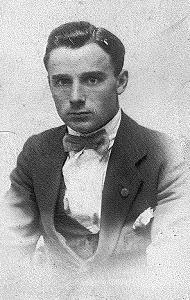
|

|
| Private Dominic Thomas FULGONEY (G/24012) | |
|
2nd Battalion Queen's (Royal West Surrey) Regiment Date of birth: 24th September 1894 Date of death: 30th October 1918 Died of wounds aged 24 Buried at Giavera British Cemetery Plot 6 Row E Grave 7 |

|
| Dominic Thomas Fulgoney was born at 17 Cavendish Square, Brighton on the 24th of September 1894 the third son of Louis Fulgoney, an ice cream vendor and organ grinder, and Elizabeth (nee Pravey) Fulgoney of 17 Cavendish Street in Brighton. He worked as a grocer's errand boy before accepting a position as a servant at Lancing College. He enlisted in Brighton as Private 2158 in the Royal Sussex Regiment later transferring to the Queen’s (Royal West Surrey) Regiment. He was wounded twice during the war. At 9.30pm on the 26th of October 1918 the 2nd Battalion Queen’s (Royal West Surrey) Regiment left their bivouacs near Maserada and crossed a pontoon bridge across the River Piave to the island of Papadopoli where they dug in at 1am on the 27th. At 615am they advanced in open formation in support of an attack which was led by the Manchester Regiment. Their advance was stopped at around 8am but by 11 they were moving forward again and occupied and consolidated the captured Austrian line. The morning of the 28th passed quietly but at 9.30am orders were received to continue the advance which they did at midday. They relieved the leading battalions in the line that evening and found that the enemy were retreating on a wide front. By 4am on the 29th they had moved forward again to a line on the Vazzola/Rai Road which had only just been reached when they were ordered to move forward again, as the Brigade's advance guard, directly up the Vazzola Road. They ran into enemy opposition at the bridge over the River Monticano and enemy machine gun fire caused a number of casualties and a delay to the advance which lasted most of the morning. At 2.30pm the battalion, in conjunction with a battalion of the South Staffordshire Regiment, took the village of Cimetta capturing a number of prisoners and machine guns. They held the village through the night of the 30th suffering casualties from enemy shell fire while they were there. During this period the battalion suffered casualties of 18 other ranks killed or died of wounds with 1 officer and 83 other ranks wounded and 5 missing. He is commemorated on the Brighton war memorial and is listed in the memorial book at St Peter’s Church there. He is also commemorated on the Southampton war memorial. |
|
| College Servant |
Back